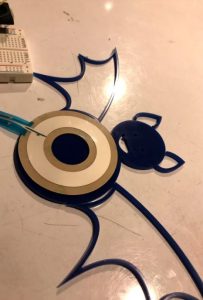For this assignment, I wanted to explore how speed relates to pitch. I decided to try and create a rolling cylinder that produces a sound. To achieve this I attached my arduino to a shaft and weighted it down. I wanted to use a motor encoder to measure how quickly the cylinder was rolling and then send measurements to the buzzer to adjust the frequency it produces.
FINAL:
After realizing I couldn’t do the above idea, I reassessed how I was going to approach the project. I am now programming my buzzer to play a melody that will speed up depending on how close the user is to the proximity sensor.
Read about it here:
https://samanthaho.myportfolio.com/spoopy-feelings
Happy Halloween 🙂
CODE:





